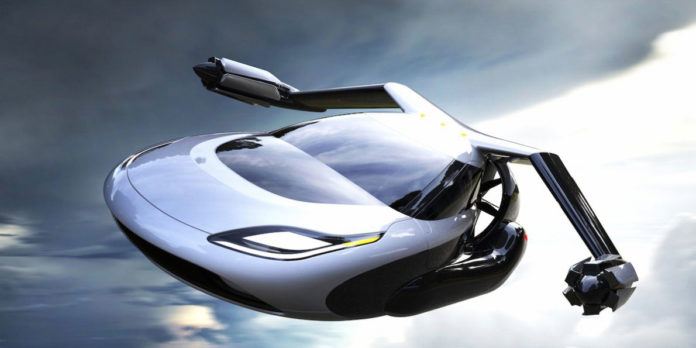The flying car is mostly a trendy theme in fantasy and science fiction stories. Previously, the flying car was the common feature of conceptions of the future. But, now, it will soon cover the sky in real.
This week, Germany-based company Lilium Aviation successfully took its new all-electric, two-seater vertical take-off and landing (VTOL) prototype for its first test flight. The jet was piloted remotely during the tests, but its operator says the vehicle’s first manned flight will happen soon.
The flying car prototype is powered by 36 all-electric jet engines mounted on 12 movable flaps on the Jet’s 10-meter-long wings. During the take-off, the flaps point down to provide vertical lift, and then they gradually tilt into a horizontal position, providing forward thrust.
The battery embedded inside consumes almost 90% less energy than traditional drone-style aircraft. Thus, it allows the car to reach a maximum cruising speed of 300 km/h (183 mph) and achieve a range of 300 km (183 miles).
Patrick Nathen, co-founder of Lilium Jet said, “In many ways, electric-powered aviation is still in its infancy. Electric cars with thousand-pound batteries generally max out at 300 miles per charge. The most sophisticated electric aircraft today can barely muster an hour aloft at 99 mph — and that’s without vertical take-off and landing. But, the battery in this flying car will get the job done.”
“It’s the same battery that you can find in any Tesla. The concept is that we are lifting with our wings as soon as we progress into the air with velocity, which makes our airplane very efficient. Compared to other flights, we have extremely low power consumption.”
The company is now working to have its aircraft piloted autonomously, which determines using human pilots in the meantime.
Nathen said, “There will be parachutes on board, and something called the “Flight Envelope Protection System” will prevent the pilot from performing maneuvers or flying the aircraft beyond safe flight parameters.”
The startup plans to build a five-passenger version of the jet eventually and envisions its aircraft being used in an on-demand capacity in dense, urban areas – the Uber of flying cars.
“This jet and virtually all other innovative vehicles in development right now will run on renewable. This is more than a trend it is simply the way of the future. Tesla vehicles will soon be as affordable as standard vehicles, and their semi-trucks and pickups are on the way. This kind of electric-powered aircraft is the next step in truly getting clean energy off the ground while leaving fossil fuels in it,” said Nathan.
